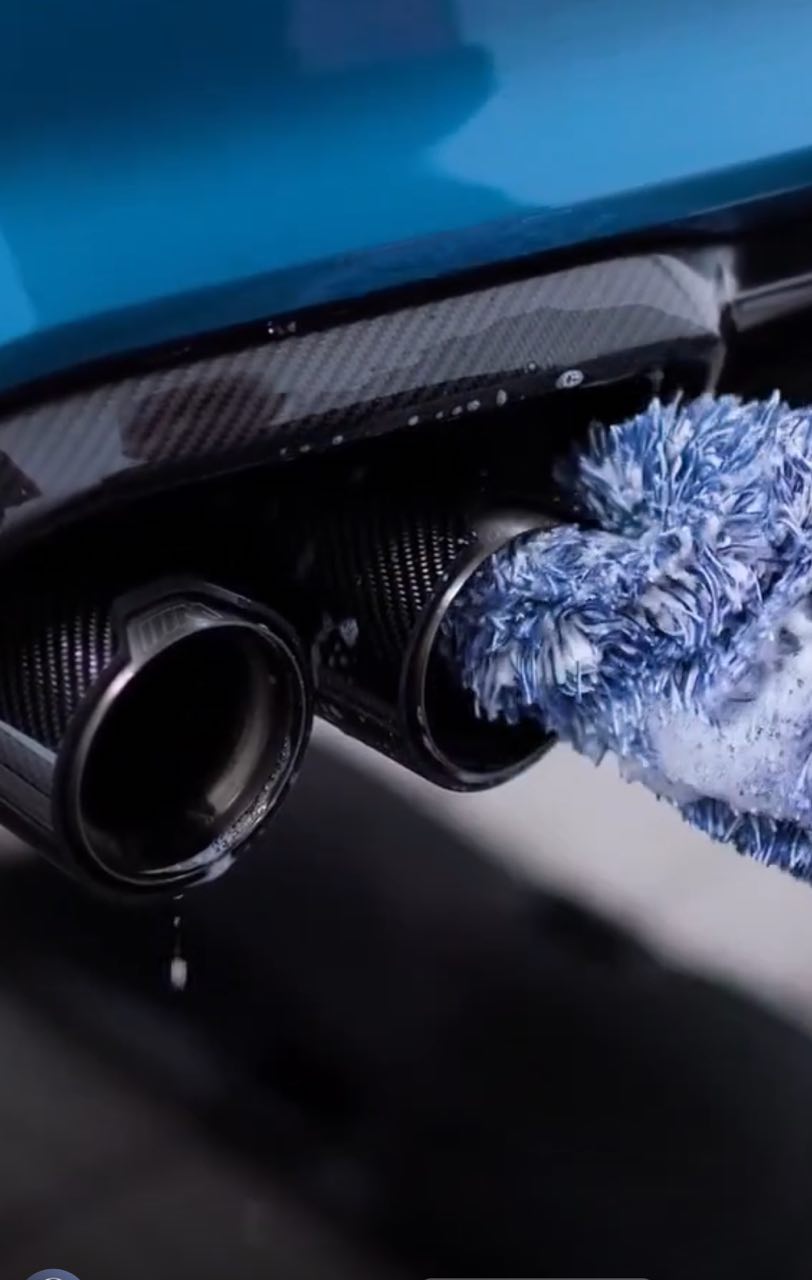Regular cleaning is essential for maintaining your vehicle’s performance and efficiency. Keeping your vehicle’s exhaust system free of carbon buildup is critical to this maintenance routine. Carbon buildup can interfere with the optimal performance of your engine and its emission control system, leading to lower fuel efficiency and possible damage or failure of components. Fortunately, you can keep carbon deposits from accumulating in the exhaust system with proper care and periodic attention. This article will explain how to clean carbon out of exhaust safely and effectively. It will discuss why removing these deposits is important, how to determine if a cleaning is necessary, what materials you’ll need for the job, and step-by-step instructions on how to get the job done right. By following these guidelines, you can ensure that your vehicle runs smoothly and performs optimally for years.
 Why You Should Clean Carbon out of Your Exhaust
Why You Should Clean Carbon out of Your Exhaust
Carbon deposits can accumulate over time in the exhaust system due to incomplete combustion of gasoline and other fuels. These deposits can cause many issues if they are not regularly removed. The most common problem is reduced fuel efficiency, directly impacting your wallet as you’ll spend more on fuel to get the same mileage. In addition, these deposits can also lead to excessive engine noise, poor acceleration, and a decrease in overall engine performance. Finally, carbon buildup can limit the effectiveness of your vehicle’s emission control system and cause it to fail state emissions tests.
What You Need to Clean Carbon out the Exhaust
Before beginning any maintenance on your vehicle’s exhaust system, ensure you have all the necessary tools and materials for the job. The items you need will depend on which method you use to remove carbon deposits from your exhaust pipes (discussed further below). However, some general items that are typically needed include rubber gloves; protective eyewear; a mask or respirator; degreaser; rust remover; steel wool pads; a brush or wire brush; baking soda paste (optional); sandpaper or sandblaster media (depending on the method chosen); a garden hose with an adjustable nozzle setting (for water method only).
Three Methods for Removing the Carbon Buildup
Three primary methods can remove carbon buildup from your exhaust system. Each method has pros and cons, so weighing them against one another is important to determine which is best for you.
-
Chemical Spray Method: This is the simplest and most common way of removing carbon deposits from an exhaust system. Start by spraying a degreaser or rust remover onto the affected areas using a spray bottle or aerosol canister. Allow the chemicals to sit for about 10 minutes before scrubbing with steel wool pads or a brush. Wash with water and continue the process until all residues are gone.
-
High-Pressure Water Method: If you have access to a pressure washer, this method is perfect for quickly blasting carbon buildup from your exhaust system without using harsh chemicals. Set the pressure washer at its highest setting and spray away at the affected areas in short bursts until all the deposits are gone. Ensure you wear protective eyewear while doing this, as some of the water may escape back outwards towards you!
-
Sandblasting Method: This method is perfect if you want a more thorough cleaning job done on your exhaust pipes; however, it does require more materials than other methods discussed here, such as sandpaper and/or sandblaster media (available at most home improvement stores). It also requires more time and effort since it involves manually scrubbing away at the affected area using these materials to remove any stubborn residue or buildup accumulated over time on your pipes. As with any maintenance task on your vehicle’s exhaust system, ensure you wear protective eyewear while performing this procedure!
Tips and Tricks for Complete Removal
Regardless of which method you decide to use for cleaning carbon deposits from your exhaust system, here are some easy tips to keep in mind:
-
Always wear protective gear such as gloves and eyewear while performing any kind of maintenance work on your vehicle’s exhaust system.
-
Ensure you follow all instructions given on the degreaser or rust remover bottle when using these chemicals; if left on too long, they can damage the metal of your exhaust pipes.
-
If using a pressure washer, set it at its highest setting to achieve the most efficient cleaning job.
-
When sandblasting, apply pressure evenly and consistently across all affected areas to ensure complete carbon buildup removal.
-
After cleaning, use a baking soda paste to neutralize any remaining chemicals or debris left in the pipes.
-
If you notice any damage or leaks after cleaning, it’s best to consult a professional mechanic to address the issue as soon as possible.
Conclusion
Regularly cleaning carbon from your exhaust system is crucial for vehicle upkeep. It can help keep your car running smoothly and efficiently for many years and is also necessary to pass state emissions tests. There are three primary methods for removing these deposits – chemical spray method, high-pressure water method, and sandblasting – each with pros and cons that should be weighed before cleaning. With the right supplies, appropriate safety gear, and following the tips listed in this article, you can safely and effectively clean carbon out of your exhaust system for optimal performance. If you’re interested in upgrading your vehicle’s exhaust system for even better performance, you can also read about the Best Exhaust for 6.0 Power Stroke to explore your options.


 Why You Should Clean Carbon out of Your Exhaust
Why You Should Clean Carbon out of Your Exhaust